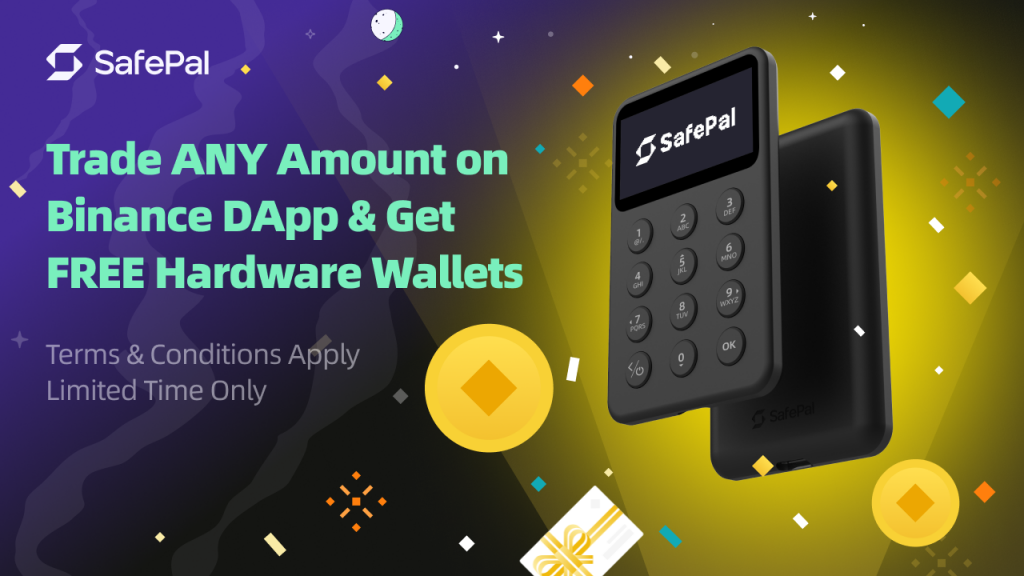#SAFU101 is a topic to share practical tips and comments on how to securely store and manage crypto assets for most novice beginners. Welcome to propose interesting topics that you are interested in at Twitter or Telegram.
Hi everyone, this is Camille from SafePal support team. Being the Chief Customer Officer(This title is a made-up, by me LOL), I have encountered a lot of user queries. Some users came to us for product guidelines(we will continue to publish more useful videos/articles to teach users how to use SafePal in the simplest way), some are asking about general knowledge of blockchain and cryptocurrencies(welcome these diligent users!), and some are offering practical product suggestions(this type of user is my favorite lol ). Among all the cases, the least case that I want to see is people losing money because of some human errors. To avoid similar cases, in #SAFU101, I’d like to share the real-cases happening around us to mind all crypto users of learning other people’s lessons and avoid similar mistakes.
The first scenario I’d like to share today is about sending crypto.
The concept of decentralization surely arose endless imagination and fascination of people dreaming of a self-governance world, where you take full control of all your assets and no third party can steal, change or devalue your money by any effort. Every coin has two sides. The downside is that not everybody is ready for such decentralized freedom. The most evident cases happen where novice users make unexpected mistakes when sending crypto to others, leading to asset lost. Here I’d like to share 4 practical tips for all crypto beginners, describing the right pose to send crypto to your friends.
1. Do not send a token to a coin address, and vice versa
A lot of users think Token and Coin as the same subjects, actually they aren’t the same. They share totally different concepts in blockchain world, and usually, don’t support inter-transactions. If you mistakenly transfer some Token to a Coin address, you will probably lose your money. We received at least 5 user reports claiming failure to receive money, which finally turned out to be a human error by sending Token to Coin address.


The most straightforward definition of Coin and Token is: Coin usually refers to the blockchain projects that have already launched their own mainnets, while Token is related to the blockchain applications that haven’t released mainnet and, instead, grow their token model on top of mature blockchains.
Coin is the native currency issued along with the birth of a blockchain and used as the gas or fuel for all economic behaviors on top of the basic blockchain. It is also called Native Coin. Token is a benefit credential attached to blockchain applications, which are issued and developed on top of basic blockchain. Tokens are used in according DAPPs or smart contracts as proof of interests of these applications. For example, before BinanceChain mainnet was launched, BNB is an ERC20 Token issued on Ethereum, as the gas and benefit credential for Binance users. After BinanceChain was launched and BNB migrated to mainnet, it became the native coin on BinanceChain, playing an important role in Binance ecosystem.
Now it’s easy to see that since Coin and Token are necessarily issued on the same blockchain, and each blockchain is independent of other chains, users are not able to transfer Coin to a Token address(vice versa).
Being a crypto holder, it’s important for you to stay tuned of the latest developmental progress of your token/coin, such as whether, when and how the dev team is releasing their own mainnet, thus to know whether there could be changes to your assets in the near future. The most direct way is to query the coin/token team directly about this difference.
2. Always double-check the receiving address, even if you copy and paste it
This is a crucial step for all transactions. If the money is mistakenly sent to a wrong address, nobody is able to retrieve the money back. Even if you copy and paste the address, still don’t forget to verify and check the address.
3. Be careful when you are scanning an unknown QRcode
When we are inputting a receive address, we can either copy/paste the address, or simply scan the QRcode to fill in the address. Scanning a QRcode to get a receive address has become a common interface to save time. Meanwhile, we noticed that some users might directly transfer the money after scanning the QRcode, without double verifying the correctness of the address. Since the QRcode could be generated via any online public tool, it is possible that these tools could be hacked by hackers, thus changing the address into their own ones or inputting malicious code. Either of this could cause potential asset lost. If you are scanning a QRcode to get the receiving address, don’t forget to double-check and verify the address before sending anything out.

4. Send a small amount first before sending a bigger amount
This is a practical tip mostly adopted in the financial industry, but might not be known by many users. Since a single mistake(such as messing up with Token and Coin, not setting enough gas, etc) could cause failure to transfer, it is always better to send a small amount first before sending a bigger amount, thus to make sure you are not sending to a malicious or invalid address. For the second time of sending crytpo, don’t forget to check and verify all transfer details as well.
Hope you find these tips useful. If there are any other topics that you would like to hear from us, let us know via Twitter or Telegram!
Best regards,
Camille









